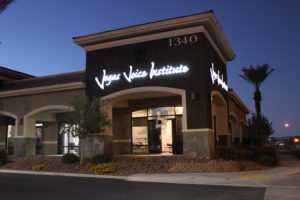You Have A Hole In Your Throat, What’s Next?
by Vincent M. DelGiudice, MSCCC-SLP
Speech-Language Pathologist
Total laryngectomy is a procedure used to save a person’s life when a doctor feels that throat cancer may spread. Disrupting someone’s natural airway and voice is not something we typically take lightly in this field, but it is something that is done. After this procedure is performed, it’s time to deal with the problems in front of us and decide how to compensate and improve the quality of the life saved.
After this surgery, you are left with a few choices to regain your “voice” or ability to communicate back. The first type is the electrolarynx. This is a device that is used to vibrate the oral and pharyngeal cavity and act as the vocal cords. It is small and can fit in your pocket. It’s a cylindrical device and you hold it to your neck. They can be expensive, so try not to get in the pool with it. You might laugh at this, but you will become so accustomed to using this device it, will be part of you.
Another for regaining your voice is called esophageal speech. This is essentially burping your speech. You remember when there was the kid in grammar school that could burp the ABC’s. This is the type of voice that you can attempt after losing your vocal cords. Some people have a great quality voice with this speech while others find it is too much work or they may not like the sound.
Lastly, you can get a tracheoesophageal puncture (TEP). This is a device that is set up during the initial surgery or during another minor surgery a few weeks following the total laryngectomy. It is a device in your stoma that when held forces air through the esophagus (food pipe) instead of the no longer existent larynx (top of the windpipe). It vibrates the top of the esophagus and creates the vibrations needed for speech. There are now also devices that are hands free so that you don’t have to reach up and hold your stoma. There are also plenty of different variations of prostheses that can be used to make you more comfortable. Discuss this with your doctor or speech pathologist to see what would work best for you.
Again all of these options are up to you. Think about it carefully and ask around. Ask your doctor and your speech pathologist to discuss ALL options with you. It is better to make a well-informed decision rather than to choose what someone else prefers. Choosing between these options can be difficult for some people. Fortunately, there’s no reason you can’t try all of them. You can practice esophageal speech and try the electrolarynx before you even have surgery to know if either of those would be good options for you. Stay tuned for the next few blogs where I will discuss these three options in more detail.




